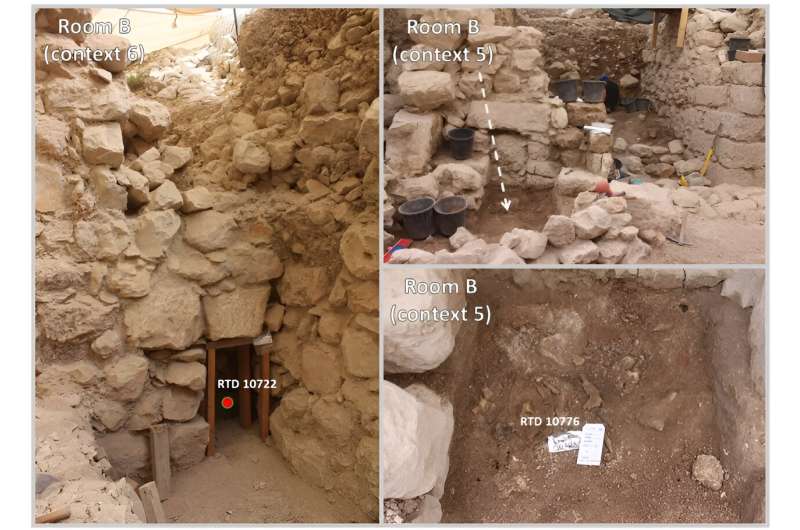May 6, 2024 report
Artifacts from the First Temple in the city of David accurately dated for a more precise timeline

Bob Yirka
news contributor

A team of archaeologists, antiquities specialists, Bible scholars and mass spectrometry specialists, affiliated with several institutions in Israel working with one colleague from the U.K. and another from the U.S., has dated material uncovered in the First Temple in the city of David, in Jerusalem, to an unpreceded level of accuracy.
In their published in the Proceedings of the National Academy of Sciences, the group describes how they used radio-carbon dating, tree ring analysis and other techniques to accurately date artifacts collected from a dig site in one of the oldest parts of Jerusalem.
The ancient history of Israel, and most particularly the city of Jerusalem, has taken on increased significance over the past several decades as religious and political entities have used it to make claims about current rights to certain parts of the city. One such site is believed to be what has been described in ancient texts as the City of David.
Prior research efforts have involved digging down into dirt that covers much of the site to find artifacts that could be used to prove correlations between modern findings and claims made in ancient scripts.
To date, such efforts have not led to results accurate enough to make such associations. In this new effort, the team sought to date more recently found artifacts with much more accuracy.
The work by the team involved analysis of artifacts (such as seeds and a bat skull) found among strata dated to between 770 and 420 BC—which has been named the Hallstatt Plateau. The team performed 103 carbon-14 measurements, providing high-resolution results.
The researchers also dated material in the same strata using tree-ring measurements, which allowed for annual resolution. After dating the artifacts, the researchers looked for and found associations between the nature of the artifacts and reported historical events mentioned in several ancient texts, including the Bible.
The team found that they were able to date many of the artifacts to historical events, which allowed them to verify that the city was first settled sometime between the 12th and 10th century BC, and that it expanded westward thereafter. They also found evidence of an earthquake and the rebuilding that occurred thereafter during the 8th century BC—and the Babylonian destruction of the city of Jerusalem in 586 BC.
Written for you by our author —this article is the result of careful human work. We rely on readers like you to keep independent science journalism alive. If this reporting matters to you, please consider a (especially monthly). You'll get an ad-free account as a thank-you.
More information: Johanna Regev et al, Radiocarbon chronology of Iron Age Jerusalem reveals calibration offsets and architectural developments, Proceedings of the National Academy of Sciences (2024).
Israel Antiquities Authority announcement:
Journal information: Proceedings of the National Academy of Sciences
© 2024 Science X Network




















